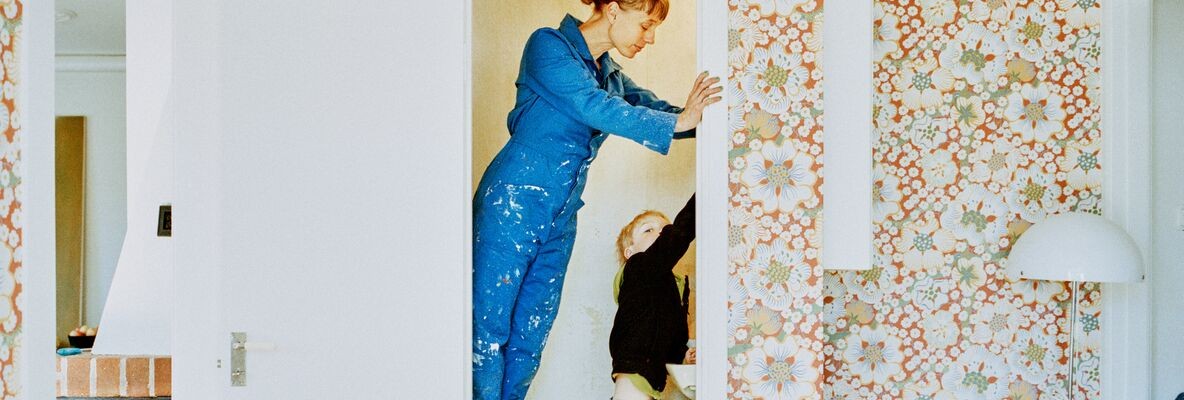We use cookies to enhance your experience. Basic cookies are essential for the proper working of this website. For example, they save your language preferences. They also help us gather anonymous information about the use of our site. More information in our Cookie Policy.
How to “recycle” your mortgage
If you own a property, whether a house or a flat, sooner or later you will probably be faced with major renovation work, such as a complete re-tiling of the roof, replacement of all your windows, or changes to your interior layout. Or perhaps you have always dreamed of buying a holiday home or a rental property to provide an additional source of income. Whatever your plans, unless you have significant savings, there is a good chance that you will take out a loan, using the services of your bank.
For renovations, the simplest solution is a personal loan, but this is not necessarily the most financially advantageous. Unless you are spending money on renovation work aimed at reducing your home’s energy use (installation of photovoltaic panels, roof insulation, installation of thermostatic valves, etc.) which guarantees you a lower rate and tax breaks, a personal loan generally costs more than a property loan because higher rates are charged. In addition, the term of the loan is shorter than that of a mortgage loan, sometimes resulting in larger monthly repayments, not always suited to your budget. In the case of a new property purchase or a major renovation entailing major expenses, you have no choice but to take out a new mortgage, the main drawbacks of which are more legal and land registry fees, and much reduced flexibility.
An often little-known form of property loan
There is, however, another form of property loan that might prove attractive in some cases. This is a mortgage top-up loan. If you have taken out a mortgage and already repaid a significant portion of the principal, then providing your bank agrees to the new loan, the top-up arrangement allows you to borrow back some or all of the principal repaid. You are, in a way, recycling your mortgage.
Let’s look at an example. Ten years ago, you took out a fixed rate, 20-year loan to buy a house for €500,000. The total principal repaid currently stands at €250,000 (you have €250,000 left to pay, not including interest). The top-up mortgage mechanism means that in theory, you can borrow up to €250,000.
Only “in theory” because not all banks will agree to such a request, and they are under no obligation to agree. However, to retain your custom, and provided the terms and conditions so allow, the lender might agree under certain conditions. Your income level must allow you to cover the new repayments; you must have repaid a certain portion of the principal before you can borrow it again; the new loan must be for property, either for renovation work or a new purchase; the mortgage, being valid for 30 years, must cover the duration of the new loan; and a minimum loan is generally required. Top-up loans are therefore not suitable for minor building work.
A loan that saves you money
Feel free to ask your bank for information about top-up loans on your mortgage. It is worth a try, as the financial advantages make it so worthwhile. Re-using your existing mortgage avoids the fees for a new mortgage, which is an appreciable saving. There is no need to see a notary again, and administrative costs are reduced or non-existent. Moreover, given that the interest rate will be the market rate at the time of the top-up, there is a high probability, given the current downward trend, that it will be lower than the rate for the initial loan. The cherry on the cake is that you might see more tax advantages under the new mortgage loan, depending on your personal circumstances.
What if you don’t have a mortgage and so are far from considering a top-up? Bear the idea in mind anyway when you are making enquiries with different banks to ask for a mortgage. If a bank offers you a slightly more attractive interest rate than elsewhere but the general terms and conditions mean it cannot easily agree to a potential top-up loan application, weigh the pros and cons carefully. A benefit today can very easily become a drawback at some future point.
12/2021
-
Property buying: watch out for hidden costs!

When you buy a property for the first time, the classic mistake is to limit yourself to the purchase price of the house and not to consider the additional costs. To avoid unpleasant surprises, here are the 6 "hidden" costs to be aware of when planning on becoming a homeowner.
-
How do you plan your home loan project in the face of rising interest rates?

War in Ukraine, the economic slowdown, soaring inflation: in these uncertain times, it's not always easy to make the right decisions, especially when they concern home loans. What should you look out for if you want to become a homeowner or if you still have a loan to repay?
-
Is insurance for the remaining balance due compulsory?

Accurately quantifying the cost of insurance for the remaining balance due is difficult, because in practice it is calculated on a case-by-case basis. It depends on your loan. The higher your capital to insure, the higher the premium will be.